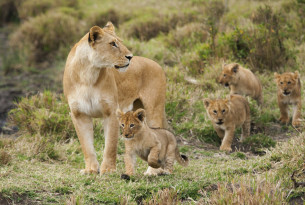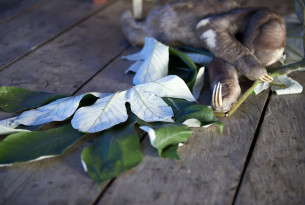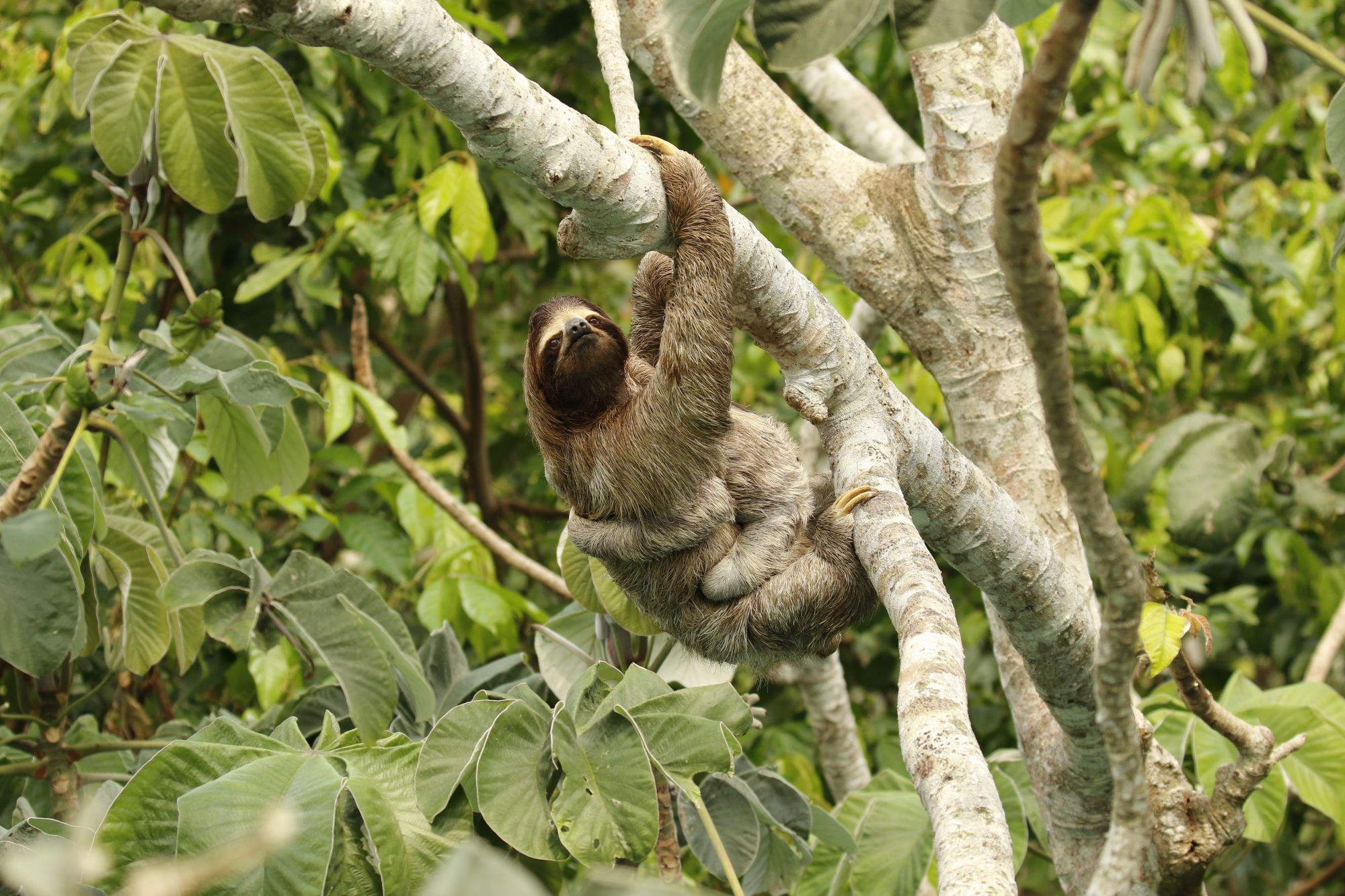
10 facts about sloths, nature's slowest animals
Sloths are gentle creatures – their scientific name, Bradypus, means ‘slow feet’ in Greek
By guest blogger Aaron Lax
Found in Central and South America, sloths call the tall trees their home, as their long claws make it difficult for them to walk on the ground.
Read on to find out more about these unique animals and why they belong in the wild.
1. It Takes Two
There are two types of sloth, two-toed and three-toed. However, this can get confusing as both types have three claws, or ‘toes’, on their hind limbs. In reality, the ‘two-toed’ sloth should really be called the ‘two-fingered’ sloth as the difference between them both can be found on their front limbs.
2. Big Brother
The modern sloth is usually around the size of a medium-sized dog. But ancient sloths of years ago, known as ‘Megatherium’, could grow as large as an Asian elephant! These giant sloths sometimes featured areas of small bone discs that would act as ‘armour plating’ for protection. They became extinct around 10,000 years ago.
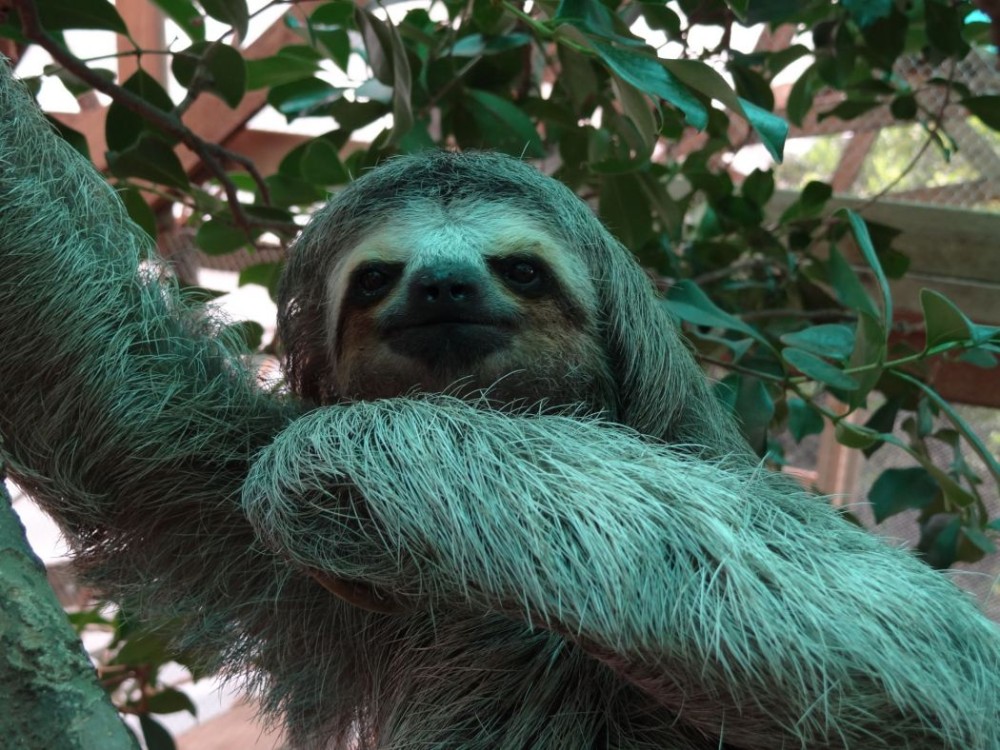
Lucky is a young adult three-toed sloth who resides at the AIUNAU sanctuary in Columbia after being rescued from captivity.
3. Natural camouflage
Sloths possess a symbiotic relationship with the algae that grows on their fur. While the sloth provides the algae with shelter and water (as sloth fur is highly absorbent), the algae provide the sloth with camouflage as well as extra nutrients through their skin.
4. Hanging Around
The impressive biology of a sloth allows it to spend 90% of its life hanging upside down. Studies show that this is made possible because their organs are attached to their rib cage, which means they don’t weigh down on the lungs. This means that, unlike us, a sloth can hang upside down with no effect on its breathing.
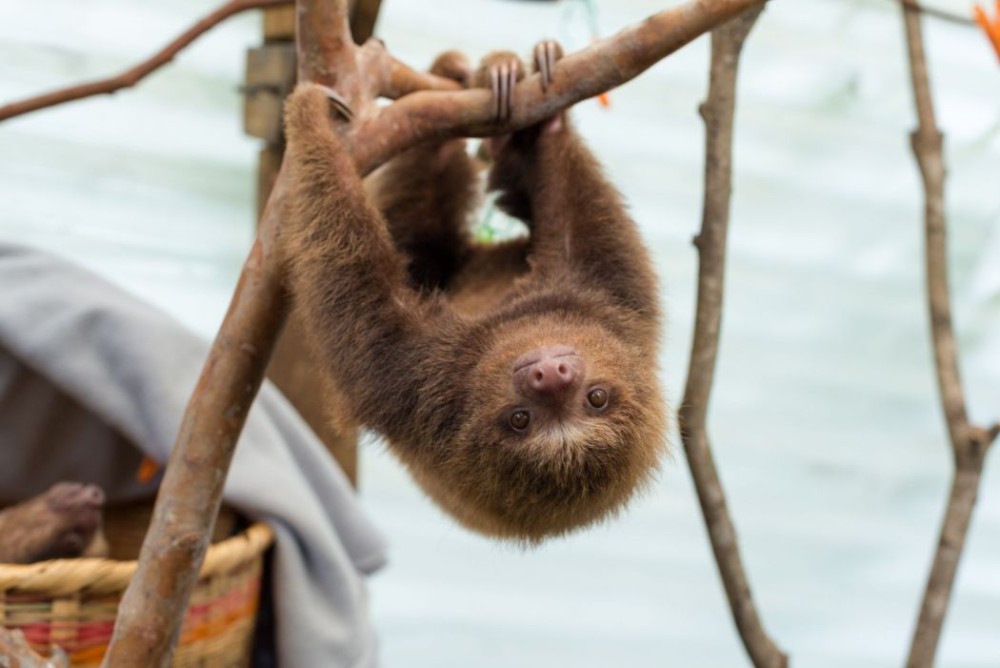
Princesa is an inquisitive two-toed sloth, also being looked after at the AIUNAU sanctuary in Colombia.
5. A Green Diet
A sloth’s diet consists mainly of buds, leaves and tender shoots, although some sloths have been known to eat insects and birds to supplement their diet. They have a multi-compartment stomach that allows them to effectively digest the tough cellulose that they eat. This proves to be a slow process, taking 30 days to digest one leaf!
6. Looking at You
Sloths have an extra vertebrae at the base of their neck that allows them to turn their head on a 270° axis. This enables them to obtain an almost 360° view of their surroundings, which proves to be a highly beneficial defensive mechanism. This unique feature makes sloths stand out from other mammals whose bone structures do not allow this flexibility.
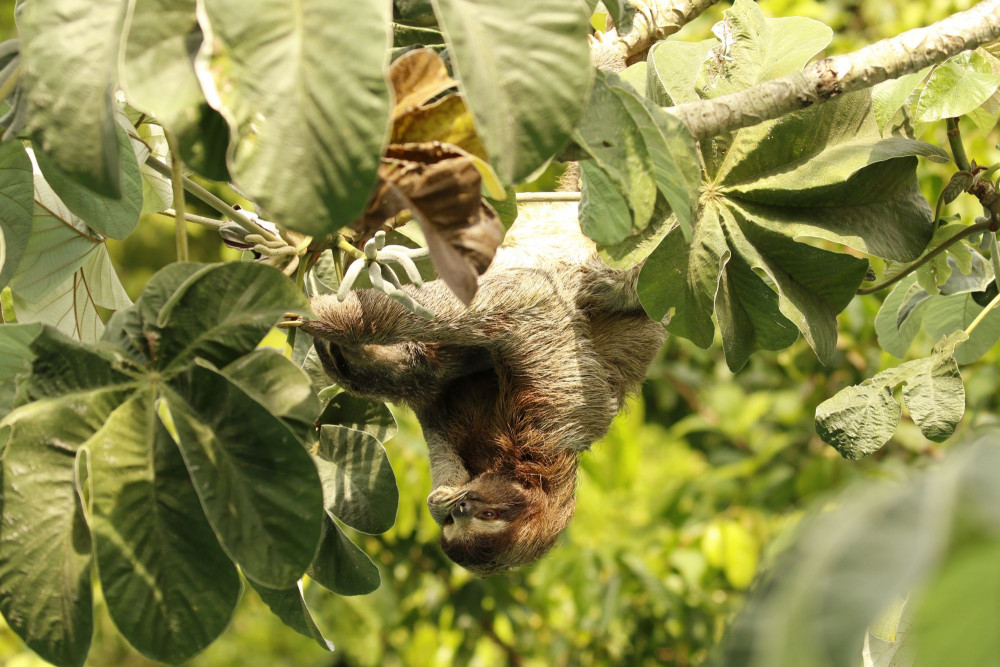
A wild sloth in the Sobrenia National Park in Panama.
7. Doing the Lengths
Although sloths have long claws that make walking on land difficult, they can move up to three times faster when they swim – surprising for such a typically slow moving character! They can also hold their breath for an impressive 40 minutes, suppressing their metabolism to make their heart rate a third of its normal speed.
8. Taking it Slow
The sloth’s nature allows it to conserve energy, moving slower than any other mammal on the planet. This modest pace means that sloths generally travel no more than 125 feet (38 meters) in a single day, and on the rare occasion that they find themselves at ground level, they crawl only 1 foot (30 cm) per minute.
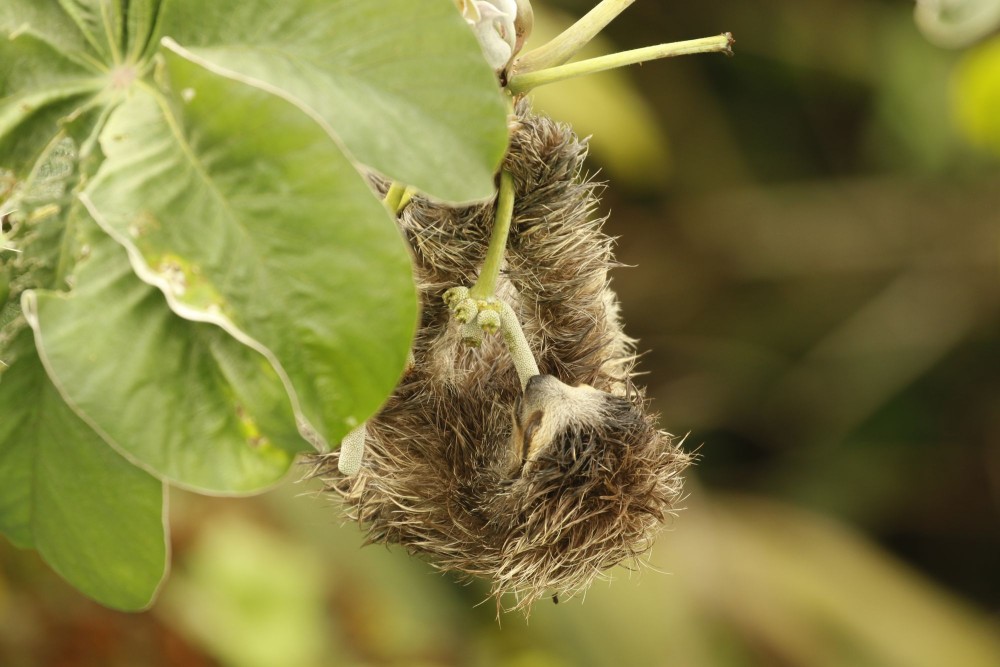
A wild infant sloth in the Sobrenia National Park in Panama.
9. Beauty Sleep
The Greek goddess Aergia was the ancient personification of sloth, and was known to sleep often. The sleeping pattern of a modern day sloth is dependent on its habitat, with sloths in captivity sleeping up to 15-20 hours a day whilst sloths in the wild sleep as much as humans, at around 8-9 hours a day.
10. A Photo Smile
The facial structure of a sloth gives the appearance that it is constantly smiling – even if it is experiencing pain, stress or anxiety. When sloths are used as a photo prop for wildlife selfies, tourists may accidently confuse this feature for happiness or contentment.
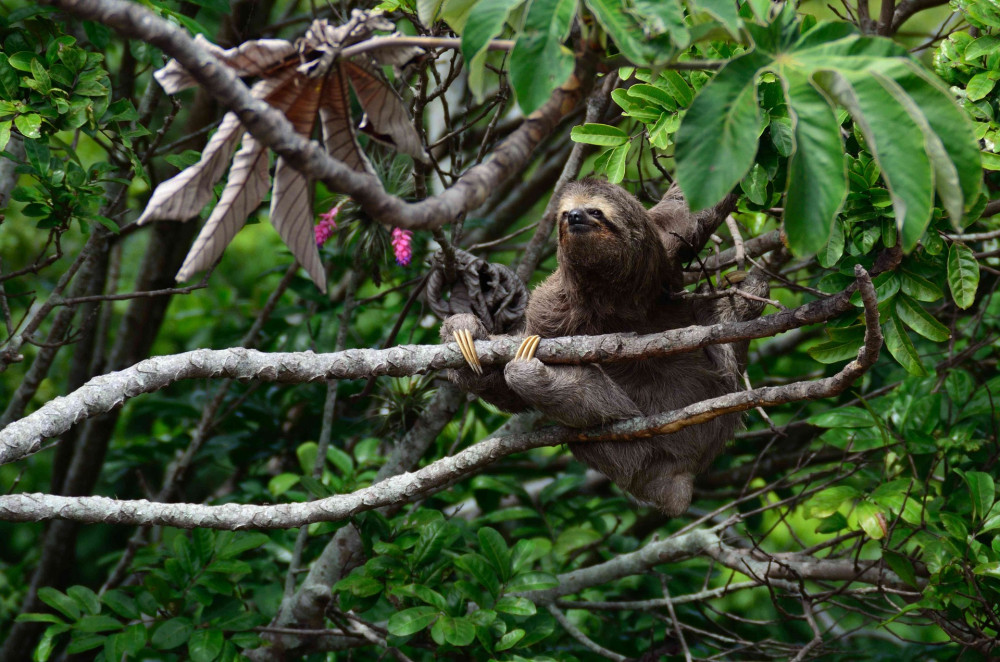
Help keep sloths in their natural habitat
Our recent study found that the most common species used for selfies in the Amazon are sloths, pink river dolphins, anacondas, and caiman – with sloths being used the most.
In the wild, sloths typically live quiet, sleepy lives. Being constantly surrounded by noise and people they can’t escape causes them unimaginable stress. The poor diets people often feed them can compound this, making them weak or ill. Sloths do not want a hug – they just want to survive.
These wild animals are being poorly handled by both guides and tourists alike when used for wildlife selfies. Research shows that sloths are frequently held by their claws or arms with no support at all. Sloths in this situation experience high levels of fear and stress.
Sloths are arboreal, which means that their natural habitat consists of trees and branches. When not being handled by tourists, sloths used in the tourism trade have been observed to be left on the floor or tied up, leaving them very vulnerable.
When you are travelling, take pictures of sloths and other wild animals when they are in their natural habitat. Say no to anyone who offers you to hold a sloth for a picture.
Sign up to our Wildlife Selfie Code for more tips to help keep wildlife where they belong, in the wild.



